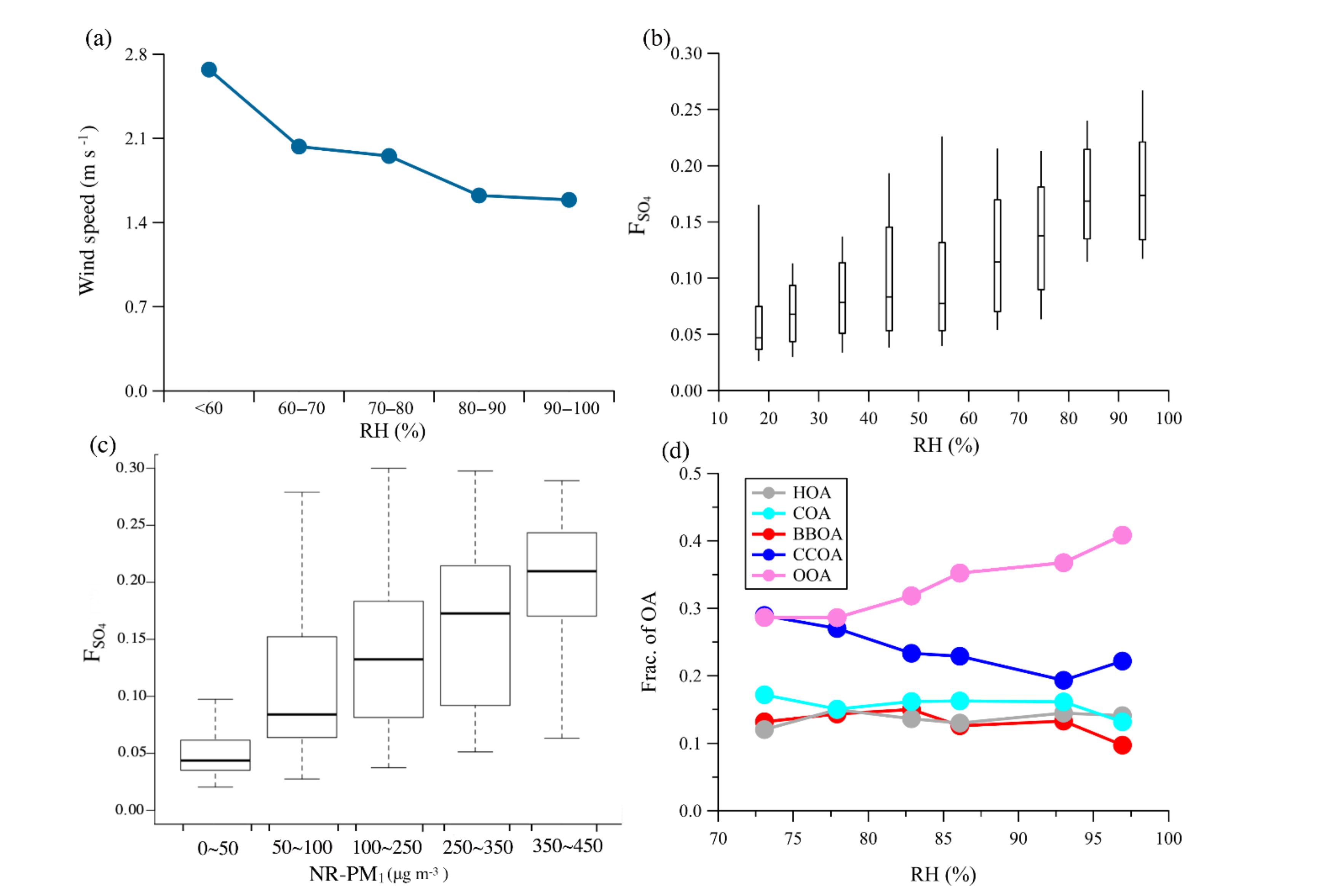Huang R. J.*, Wang Y. C., Cao J. J., Lin C., Duan J., Chen Q., Li Y.J., Gu Y. F., Yan J., Xu W., Fröhlich R., Canonaco F., Bozzetti C., Ovadnevaite J., Ceburnis D., Canagaratna R. M., Jayne J., Worsnop R. D., El-Haddad I. Prévôt, A. S. H., and O’Dowd D. C.: Primary emissions versus secondary formation of fine particulate matter in the most polluted city (Shijiazhuang) in North China, Atmos. Chem. Phys., 19, 2283-2298, 2019.
Particulate matter (PM) pollution is a severe environmental problem in the Beijing–Tianjin–Hebei (BTH) region in North China. PM studies have been conducted extensively in Beijing, but the chemical composition, sources, and atmospheric processes of PM are still relatively less known in nearby Tianjin and Hebei.
A research group led by Prof. HUANG Rujin from the Institute of Earth Environment (IEE) of the Chinese Academy of Sciences, used the Aerodyne quadrupole aerosol chemical speciation monitor (Q-ACSM) combined with PMF/ME-2 to investigate the characteristics and atmospheric evolution of aerosol composition and sources under different aerosol loadings and meteorological conditions in the most polluted city (Shijiazhuang) in North China.
Five OA sources were identified and quantified, including hydrocarbon-like OA from vehicle emissions (HOA, 13 %), cooking OA (COA, 16 %), biomass burning OA (BBOA, 17 %), coal combustion OA (CCOA, 27 %), and oxygenated OA (OOA, 27 %).
We found that secondary formation contributed substantially to PM in episodic events, whereas primary emissions were dominant (most significant) on average. The episodic events with the highest NR-PM1 mass range of 300–360 µgm−3 were comprised of 55 % of secondary species. On the contrary, a campaign-average low OOA fraction (27 %) in OA indicated the importance of primary emissions, and a low sulfur oxidation degree (FSO4) of 0.18 even at RH > 90 % hinted at insufficient oxidation (Fig.1).
In addition, secondary inorganic and organic (OOA) species dominated in pollution events with high-RH conditions, most likely due to enhanced aqueous-phase chemistry, whereas primary organic aerosol (POA) dominated in pollution events with low-RH and stagnant conditions (Fig.2).
This study, published in Atmospheric Chemistry and Physics, highlighted the importance of meteorological conditions for PM pollution in this highly polluted city in North China and indicated opportunities for air quality improvement by mitigating direct emissions.

![]()
Fig.1 Variations of wind speed as a function of RH (a), FSO4 as a function of RH (b) and of the NR-PM1 mass concentrations (c), and the mass fraction of OA as a function of RH (d).

Fig.2 Summary of relative humidity and temperature, gaseous species, organic sources, and NR-PM1 chemical composition for high-RH (H1–H6) polluted, low-RH (L1–L4) polluted, and clean (C1–C4) episodes.

